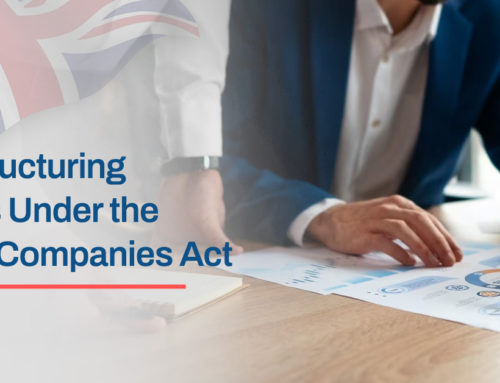In today’s volatile economy, businesses often face financial difficulties that threaten their viability, requiring a keen understanding of the contributing factors. Stakeholders, including creditors, shareholders, and directors, must thoroughly assess the viability of a company in financial distress to make informed decisions about its future. In this blog post, we will delve into the key factors to consider when evaluating the viability of a company in financial distress, offering invaluable insights for navigating turbulent times.
Understanding financial distress
Before diving into the assessment process, it’s important to understand what financial distress is. It happens when a company cannot meet its financial obligations, such as paying debts or fulfilling operational expenses, which can result in a cascade of adverse effects on its overall health. Signs of economic hardship may include declining revenues, cash flow problems, mounting debt, or legal issues like insolvency proceedings or creditor actions, all of which demand prompt attention and strategic intervention to mitigate further damage.
Key indicators of viability
When assessing a company’s viability in financial distress, several key factors come into play. These include:
Financial ratios: One of the primary methods for assessing a company’s viability is through financial ratios. These ratios provide valuable insights into the company’s financial health, including liquidity, solvency, and profitability. Key ratios to consider include the current ratio, debt-to-equity ratio, gross profit margin, and return on assets. Significant deviations from industry benchmarks or historical performance could signal potential hardship, prompting further investigation into underlying issues that may require attention and strategic intervention.
Cash flow analysis: Cash flow is the lifeblood of any business, making it a critical factor in assessing viability. A thorough analysis of cash flow statements can reveal patterns of incoming and outgoing cash, highlighting any liquidity issues or unsustainable financial practices. Negative cash flow, excessive reliance on short-term financing, irregular cash flow patterns, or significant fluctuations in operating cash flow may indicate underlying problems that need immediate action to stabilise financial health and restore sustainability.
Operational efficiency: Assessing the efficiency of operations is important in determining a company’s ability to weather economic difficulties. Key performance indicators (KPIs) such as inventory turnover, receivables collection period, asset turnover ratio, and labour productivity can provide insights into operational effectiveness. Declining productivity, excessive inventory levels, inefficiencies in resource allocation, or rising production costs may mean there are operational challenges that require strategic restructuring or process optimisation to enhance competitiveness and viability.
Market position and competition: A company’s competitive position within its industry can significantly impact its viability. Analysing market trends, customer demand, and competitive landscape can help gauge its ability to generate revenue and maintain market share. Increasing competition, shifting consumer preferences, technological disruptions, or regulatory changes could threaten viability, necessitating proactive measures such as diversification, innovation, or strategic partnerships to adapt to changing market dynamics and sustain long-term success.
Assessing management and governance
When evaluating a company’s viability during financial distress, it’s essential to assess management and governance factors, including:
Leadership competency: Strong leadership is key to navigating financial pressures effectively. Assessing the competency and experience of the management team is crucial in determining their ability to implement strategic changes, negotiate with stakeholders, and drive turnaround efforts. Lack of leadership vision, conflicts of interest, or governance failures may hinder viability. Effective communication, decisive decision-making, and the ability to inspire stakeholders’ confidence are also important attributes that contribute to successful leadership during challenging times.
Corporate governance practices: Sound corporate governance practices are integral to maintaining transparency, accountability, and ethical conduct within a company. Evaluating governance structures, board composition, and compliance with regulatory requirements can provide insights into the company’s risk management and decision-making processes. Weak governance practices or instances of misconduct could undermine viability, eroding investor trust and worsening financial difficulties. Implementing robust governance frameworks, fostering a culture of integrity, and promoting ethical behaviour are essential for safeguarding long-term viability and sustainability.
Legal and regulatory considerations
When facing economic hardship, legal and regulatory considerations are key in assessing a company’s viability. Areas to consider include:
Insolvency risk: Assessing the risk of insolvency is important when evaluating a company that’s struggling financially. Understanding insolvency laws and procedures in the UK, such as administration, liquidation, or company voluntary arrangements (CVAs), is essential for determining the available options and potential outcomes. Seeking professional advice from insolvency practitioners can help navigate complex legal frameworks and devise tailored strategies to reduce insolvency risks. Early identification of warning signs and proactive measures to address financial challenges can significantly improve the company’s prospects for survival and recovery.
Debtor-creditor relationships: The dynamics between debtors and creditors play a significant role in determining the viability of a company. Analysing creditor agreements, debt repayment terms, and negotiation strategies can provide insights into the company’s ability to manage its debt obligations effectively. Effective communication and negotiation skills are critical for resolving creditor disputes and restructuring debts, encouraging collaborative relationships that support financial stability and facilitating the implementation of turnaround strategies. Transparent communication, timely payments, and commitment to honouring obligations are vital for maintaining trust and credibility with creditors. This can result in mutually beneficial outcomes and safeguards the company’s long-term viability.
Strategic evaluation during economic hardship
Evaluating the viability of a company in financial distress requires a multifaceted approach that considers financial, operational, managerial, and legal factors, each playing a crucial role in determining the company’s prospects for survival and recovery. By thoroughly evaluating key indicators and seeking professional advice, stakeholders can make informed decisions to support the company’s recovery or take appropriate measures to mitigate risks.
Remember, early intervention is key to maximising the chances of a successful turnaround, as it allows for the timely implementation of corrective actions and the exploration of viable restructuring options to address underlying issues and restore financial stability. Proactive engagement with stakeholders, including creditors, investors, and regulatory authorities, fosters transparency and collaboration, strengthening the foundation for sustainable growth and long-term viability.
Ask an expert
If you face financial challenges, don’t wait until it’s too late. Contact us today for expert guidance and support. Call us on 0800 246 1845 or email us at mail@leading.uk.com to schedule a consultation with our experienced team. Let us help you navigate through challenging times and emerge stronger than ever before.






